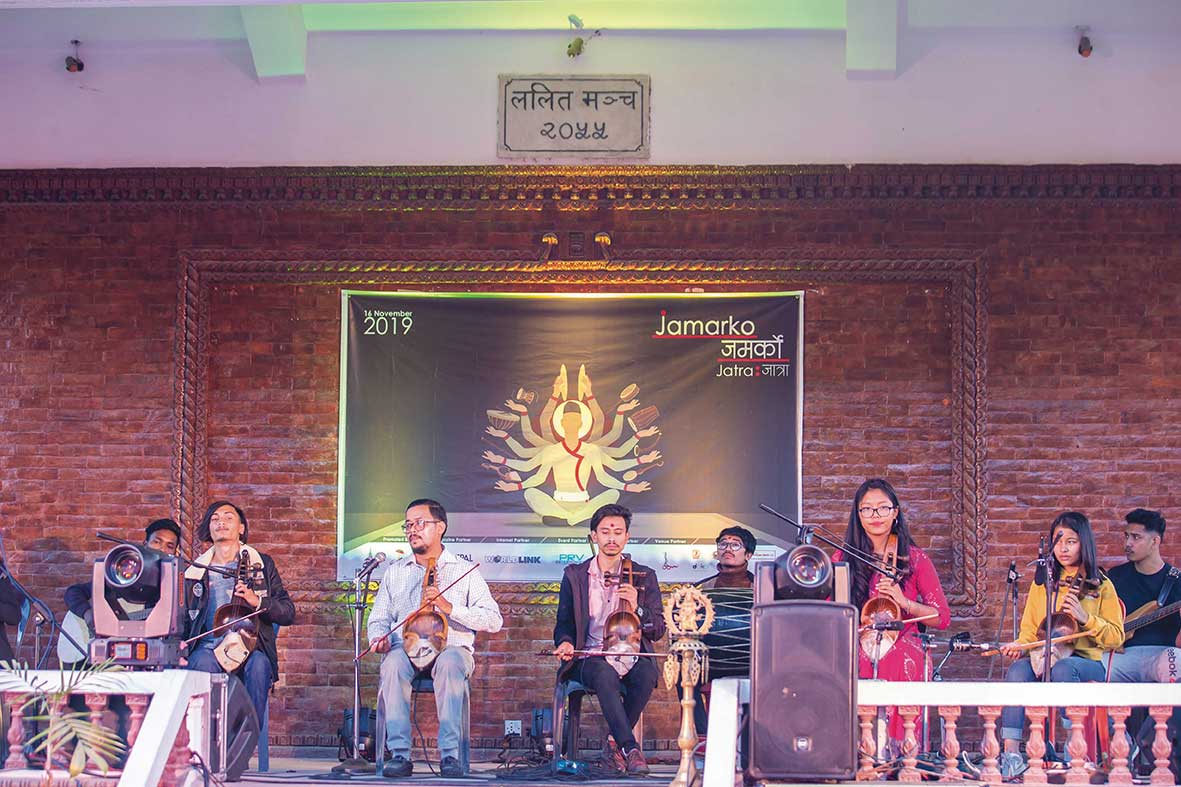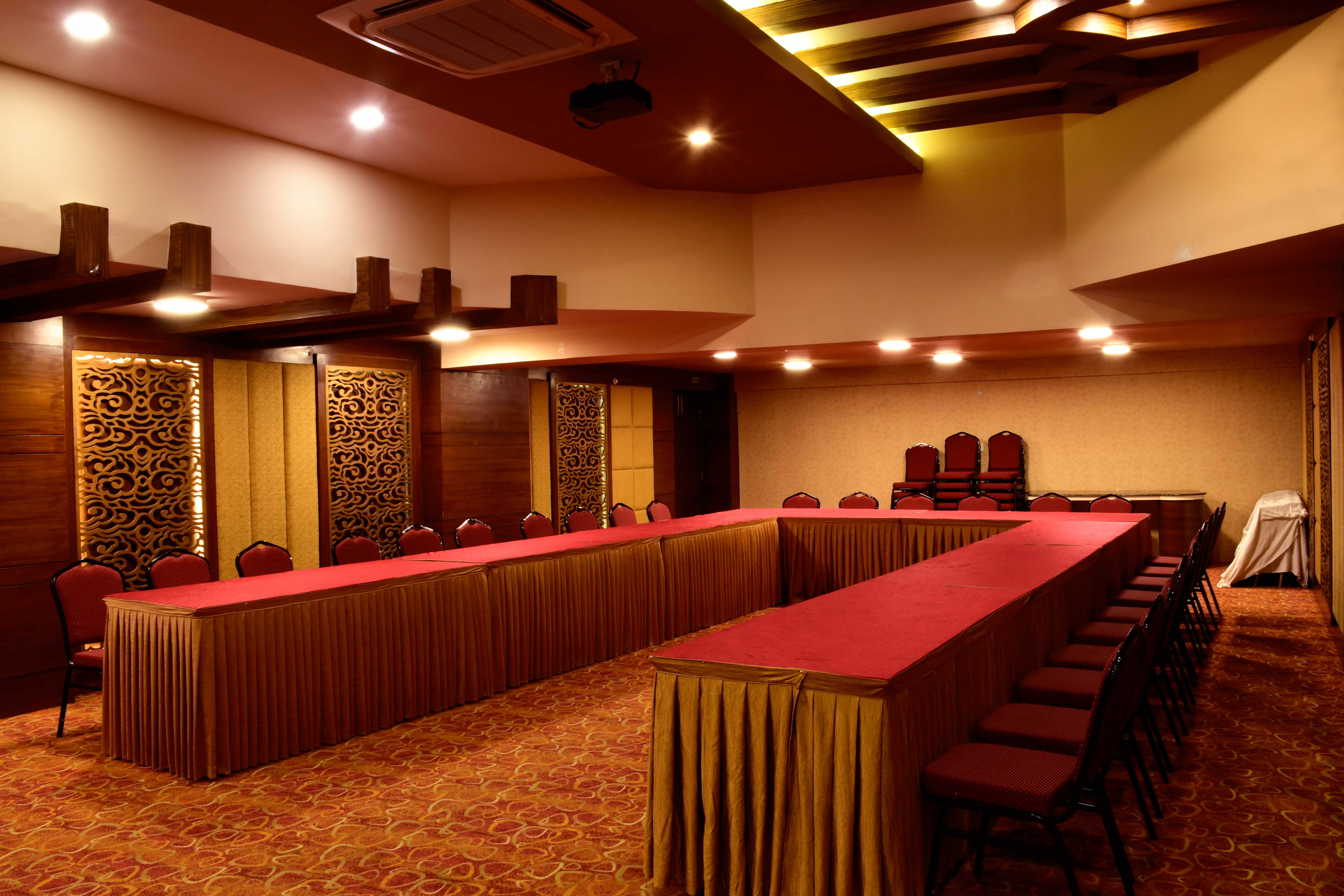The Kirateshor Temple at Pashupatinath has been home to monthly full moon concerts since 1992. The concerts, which are organized by the Kirateshor Sangeet Ashram, begin at four in the afternoon and continue into the night of the full moon in the temple’s open courtyard. There have now been over 130 concerts, a remarkable achievement, particularly when you consider the very high quality of the music that is performed month after month. The concert on Wednesday September 10th proved to be no exception. As ever, a moon-lit night in this historical and deeply spiritual location was brought alive by wonderful sounds.
Kirateshor Temple is located on a hill behind the main Pashupati temple complex. It is surrounded by greenery and affords views of the Pasupatinath area and the hills and mountains to the north of Kathmandu. The air is fresh and there is always a cool breeze. It is a also a quiet spot away from the traffic - listen closely when the music is not playing and you can hear the tumble and splash of the Bagmati River which flows at the foot of the hill. You can either approach the temple over the hills from Pashupati or across a bridge spanning the Bagmati and then up a long flight of stone stairs to the temple’s main entrance.
Krishna Prasad Ghimire, President and one of the founders of the Kirateshor Sangeet Ashram, explains that it was the beauty and overwhelming auspiciousness of the temple’s location that gave the group the idea for the concerts. It is also an ideal place to make music and the temple itself is deeply rooted in Nepali history and culture: ‘Kirateshor’ is a name for the god Shiva and is derived from the word ‘kirat’ - the name for the people of the Himalayas. Shiva is often associated with music and the temple marks the spot where, according to the epics of the Mahabarat, Arjun received blessings from Shiva.
The Kirateshor Sangeet Ashram and the full moon concerts bring together leading classical musicians of Nepal and make their music available to a large audience free of charge. The concerts are a focal point in the musical life of Nepal and the ashram is involved in a number of other activities to promote the musical culture of Nepal. These include competitions, scholarships and awards for young musicians.
A regular performer at the full moon concerts is Attul Gautam, a tabla player whose musical career closely parallels the life of the Sangeet Ashram. Attul is a talented and highly accomplished musician whose playing is characterized by warmth and expressiveness. He is an active member of the Sangeet committee and played at the first full moon concert when he was thirteen years old. His talents are only partly god-given: as a student (he studied under the renowned tabla player Homnath Upadhaya) he practiced for eight to ten hours a day. He still manages to practice for three hours a day despite a busy schedule of teaching, recording and giving performances. Attul’s musical group ‘Sukarma’ blends Nepali folk and classical music and has performed in Europe.
The full moon concert program always follows the same pattern. The music starts at four in the afternoon with bajans (religious devotional songs) and these continue until six when the classical music program begins. Nowadays the concerts end at 8.30 pm, but in the past they continued until ten in the evening. Guest artists from India and elsewhere regularly appear, but the late afternoon slots are usually given to young and novice players.
A recent high spot was the shanai (double reed wind instrument) and flute playing of Pandit Rajendra Prasanta. Pandit Rajendra was in Kathmandu at the invitation of the Indian Embassy and had given a performance at the Birendra International Conference Center. At Kirateshor his presence was enormous and his virtuoso playing simply spell-binding.
The stage where the performances are given faces the main entrance of the temple. There is a large tree in the courtyard which gives some shade in the afternoon and also becomes a playground for monkeys that continually skitter along the temple roof and out to the tall trees beyond the temple walls. A door on the right side of the courtyard leads to the temple yard which houses the shiva lingum; most evenings a steady stream of devotees quietly make their way to this spot. On the left side of the courtyard is the raised platform of the sanyasin of the temple, a man as exotic as the temple he inhabits: Purna Chandra Shrestha has lived in the temple without a break for 15 years and on full moon concert nights he sits cross legged in this place, dispensing tika and well wishes to the audience.
The concert on the full moon of Wednesday September 10th followed the established pattern. It was a cool and pleasant afternoon and just half the seats in the courtyard were taken when the program began with bajans by Kishor Sedai, a keen student of classical music. Other singers followed and as time went by the courtyard slowly filled while the sky gradually darkened.
By six o’clock the courtyard was full; all seats were taken with a number of people content to stand and listen from the sides and at the rear. The classical music program began with the harmonium playing of Ajit Gautam, accompanied by his brother, Attul Gautam, on tabla. Ajit Gautam managed to retain the hypnotic quality of the harmonium while also providing more energetic bursts of sound. The pieces he played were based on simple repeated refrains that were embellished and improvised upon as the music progressed (the traditional raga form) - and all the time this embellishment was built on the intricate interplay between the harmonium and the tabla.
By the end of this first performance the night had come, the temple courtyard was full and the full moon had begun to rise behind the hills to the north of the temple. A group of young musicians led by Attul Gautam followed. Sarangi (the Nepali folk-fiddle) flute, guitar and tabla combined to produce music that was both modern and typically Nepali.
The next performance was by a vocalist form Calcutta, Suprato Haldar. The ragas Haldar sang were slow and introspective and the singer’s voice was rich and deep. He was supported by Jeevan Rai on tabla and by Ramhari Gurung, another founder member of the Sangeet Ashram, on the harmonium - a man whose eloquent facial expression is a wonderful guide for anyone listening to South Asian classical music for the first time.
When the final performers took to the stage the quiet of the moon-lit night was finally with us and even the monkeys had given up their games to sit and listen. Janu Rada Gorkhali played sitar accompanied on tabla by Achut Ram Bandhari. There is a long period while the sitar is tuned, and then the raga begins, refrains are played, repeated and improvised upon and the dynamic interplay between sitar and tabla is developed. The piece ends with a gradual build up of tempo that gets faster and faster as the players seem to compete to show their virtuosity - and then the final crescendo.
The full moon concert ends, but the magic continues as it has done for hundreds of years. It remains intact in the temple at Kiratshor with the sanyasin and the bells, the cool breeze and the monkeys in the trees. We are blessed to be able to touch that magic once a month - on the night when the full moon appears.
The Kirateshor Sangeet Ashram is largely funded by its life members. Life membership costs Rs 1000. Contact Krishna Ghimire at 4492139 or 4484069 for details.

The Temple and the Pool of Gold
“More steps to climb?” I complained; ascending more than 500 of them had made my legs tired already...










